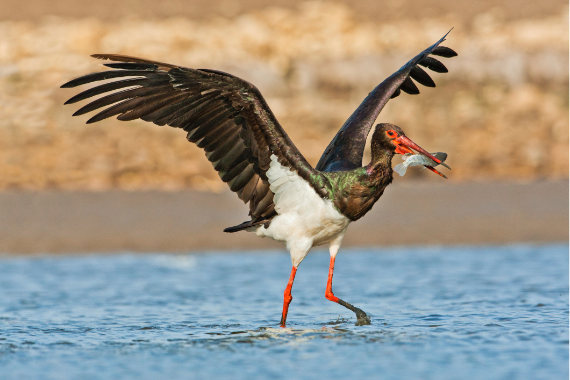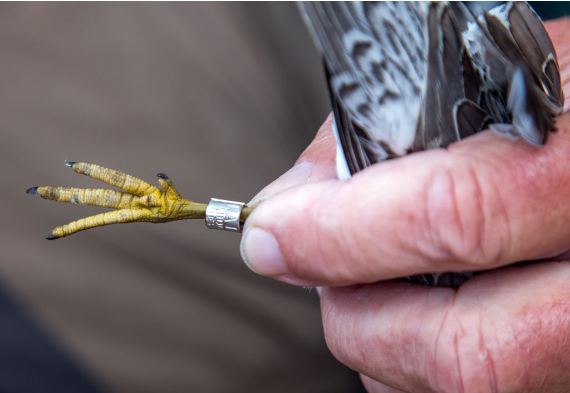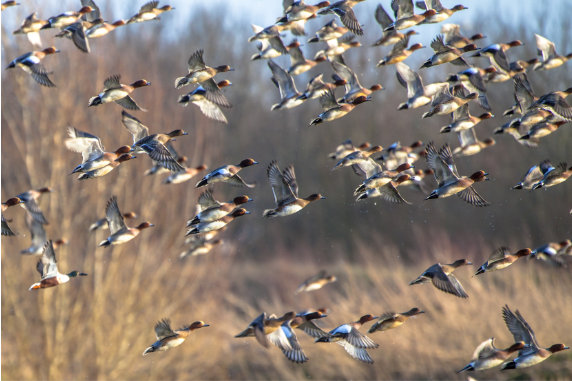The Spanish Romantic poet Gustavo Adolfo Bécquer wrote in 1868: “The dark swallows will return to hang their nests upon your balcony.” For centuries, the return of swallows to Europe after wintering in Africa heralded the arrival of spring. Today, however, many birds no longer migrate in winter, a sign of rising temperatures in temperate countries. But the effects of climate change on bird migration are so varied and complex that science is still uncovering them. World Migratory Bird Day, celebrated this 11 May in the northern hemisphere, is an opportunity to draw attention to this disruption of natural cycles that threatens the health of ecosystems and even the very survival of species.

When the cold weather arrives, many birds disappear from our countryside in search of warmer climes. Bird migration has been observed by ancient cultures for thousands of years, and is even mentioned in the Bible. But until the late 18th century, before the age of systematic bird banding and satellite tracking, it was still debated whether swallows and other species migrated or hibernated during the cold season, even under water, or whether they transformed into other birds or mice. Interestingly, a white stork found alive in Germany with a spear stuck in it made of African wood served as tangible evidence to settle the debate about the migration of these birds… in 1822.
The best-known migratory movement is from north to south when cold weather arrives in temperate and arctic regions, and in the opposite direction after winter. But there are eight major migratory routes, including east-west movements. The longest routes cover up to 80,000 kilometres annually; albatrosses circle the globe, and Arctic terns fly from the Arctic to the Antarctic. According to current science, the change in day length is the main driver of migratory behaviour, and birds are guided along their routes by the sun and stars, the Earth’s magnetic field and mental maps. Although we usually refer to aerial migrations, penguins migrate by swimming, and some land birds migrate on foot.
More diversification and lower extinction rates
Only 18.5% of bird species migrate, and some members of their populations don’t participate. And while migration poses a risk to these animals by exposing them to threats such as lack of food and predation, the overall effect is positive: migratory species become more diverse and have lower extinction rates. Food is the main driver of migration. Along their routes, birds find the food sources they need, which is why warmer temperatures in temperate regions reduce the need to migrate in winter. But does this help or harm the species?

Although there is no single answer, scientific studies agree that climate change is putting additional pressure on migratory bird species, forcing them to adapt or suffer a decline in their survival and reproductive capacity. Global warming is altering migration patterns, both in terms of routes and timing, exposing birds to new environments and conditions. It changes the availability of food, such as plants and insects, and degrades certain habitats that migratory birds need, for example by increasing desertification. And it disrupts interactions between species, not just predators and prey; birds that choose not to migrate compete with resident birds, or may even colonise previously uninhabited regions, becoming invasive species.

Migration dates have been observed to be earlier when spring is warmer, especially in more northerly latitudes, due to the earlier emergence of insects. With milder autumns, some species stay as long as there is food, but others are forced to migrate earlier if competition depletes nutritional resources. But it would be a mistake to rely on the old adage that nature is wise: the earlier spring is causing a mismatch between migration and vegetation green-up, implying a “potential growing threat of climate change for migratory animals,” according to the authors of a study. Leiden University ecologist Yali Si, who has described similar effects, notes: “If the growth of grass or other food occurs earlier or later, the birds face the risk of arriving too late or too early.”

Climate change may also be causing small evolutionary changes. A study of 52 North American migratory bird species found that since 1978, their bodies have shrunk in size and their wings have become larger. According to the authors from the University of Michigan, body shrinkage “is a general response to climate change,” and wing elongation “represents a compensatory adaptation to maintain migration as reductions in body size have increased the metabolic cost of flight,” i.e. longer wings have emerged to compensate for smaller bodies. Further analysis shows that these changes do not correspond to earlier migration dates, but possibly to faster migration; according to co-author Marketa Zimova, this may be “some physiological adaptation that might allow faster flight without causing the birds to overheat and lose too much water.”
Currently, only 9% of migratory birds are protected across their entire ranges, and data show that some species have lost up to 40% of their populations in the last half century. Only by protecting this precious natural resource and tackling climate change can we ensure that the great migratory flocks of our skies do not become a memory of the past.
Comments on this publication